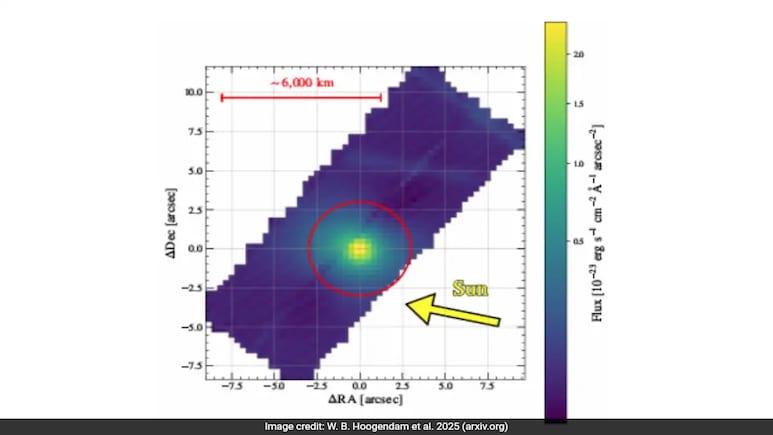
Interstellar object 3I/ATLAS continues to intrigue space enthusiasts as it flies through our solar system. NASA has reiterated that the comet poses no threat and is simply passing through, but ever since it was discovered for the first time on July 1, many theories have emerged, with the most bizarre one calling it an "alien technology".
In the latest update, a renowned Harvard astrophysicist weighed in on the object producing a metal alloy never before witnessed in nature, the New York Post reported.
New images of the object, released on Wednesday, showed the object emitting a plume containing four grams of nickel per second with no evidence of iron. The images were taken by the Keck II telescope in Hawaii in August.
Also Read | Mars Orbiters Take Rare Images of Interstellar Comet 3I/ATLAS Zooming Past Red Planet
The Keck II telescope data revealed distinct nickel and cyanide emissions around 3I/ATLAS, which extend several hundred kilometres from its nucleus.
Authors in the study, which has not yet been published in a peer-reviewed journal and posted to the preprint server arXiv, wrote: "We confirm previously reported CN and Ni outgassing, and present, for the first time, the radial profiles of Ni and CN emission in 3I/ATLAS."
The interpretation of data suggests that the nickel emission is more "centrally concentrated" in the nucleus of the comet and "favours hypotheses involving easily dissociated species such as metal carbonyls or metal-polycyclic-aromatic-hydrocarbon molecules."
The nickel signature is a hallmark of industrial production of nickel alloys, sparking speculation about the object's possible technological origin.
"There is only one place where that is known to exist and that is in industrially produced nickel alloys," Harvard astrophysicist Dr Avi Loeb told The Post.
"This was never observed for any other object."
3I/ATLAS is the third known interstellar object to enter our solar system, following 1I/'Oumuamua and 2I/Borisov. And experts have said that in every known comet, nickel and iron are present in comparable amounts.
However, Dr Loeb disagrees. He suggests that 3I/ATLAS might have technological origins, given its anomalous characteristics. "This was a process that we can imagine only because it was used in industry. Never seen in comets before."
"Anti-Tail" property
Astronomers have also confirmed the presence of a rare "anti-solar tail". "We usually see beautiful tails extending from the object away from the Sun, and in this case there was no evidence for such a tail," Loeb said.
The comet will reach its closest point to the Sun on October 29, 2025, at about 1.36 astronomical units (AU) from the Sun.
Track Latest News Live on NDTV.com and get news updates from India and around the world

